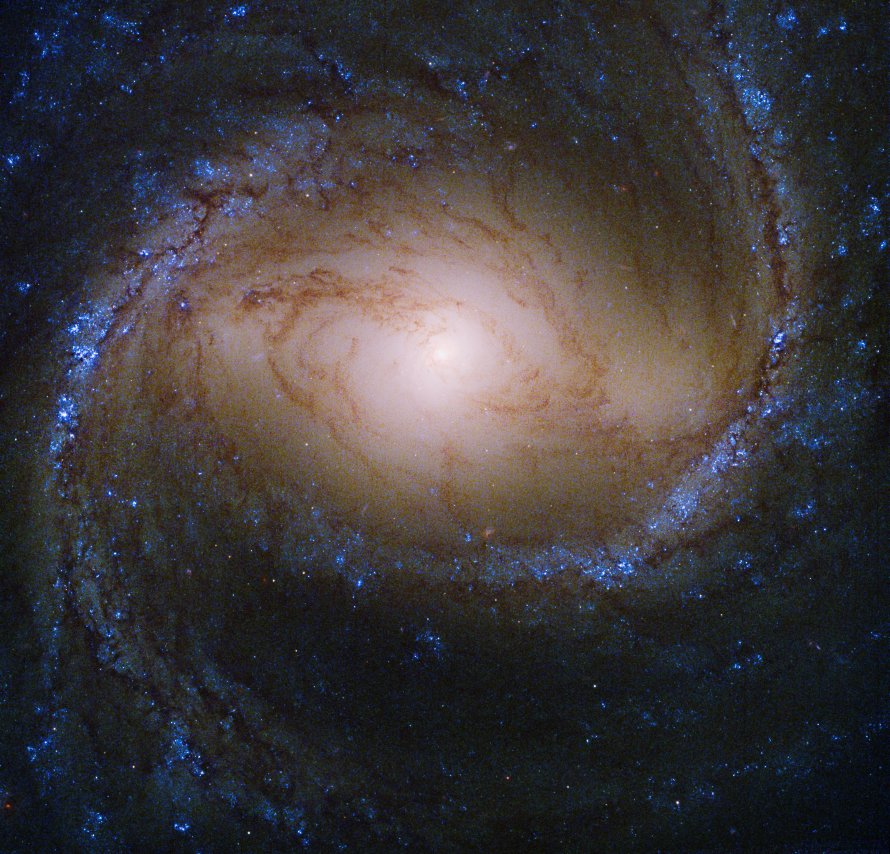M91 (NGC 4548)
Messier 91 (NGC 4548) is a barred spiral galaxy located in the constellation Coma Berenices in the Virgo Cluster of galaxies. M91 is 63000000 light years away from Earth.
M91 is best viewed during late spring, is magnitude 11, and can be viewed with small telescope. M91 is 5.4' x 4.3' in apparent size. For reference, the full moon is 30'.
Observing difficulty: Hard
- Name:
- Type:
- barred spiral galaxy
- Constellation:
- Coma Berenices
- NGC or IC:
- NGC 4548
- Magnitude:
- 11
- Viewing:
- small telescope
- Size:
- 5.4' x 4.3'
- Distance (light years):
- 63000000 LY
- RA:
- 12h 35.5m
- Dec:
- 14 30'
- Season:
- late spring
- Galaxy group:
- Virgo Cluster
- Messier Marathon #:
- 59
* The naked eye can see up to magnitude ~7-8 objects under ideal dark sky conditions.
Tracing the Barred Spiral Galaxy in the Virgo Cluster
Messier 91 (M91), also known as NGC 4548, is a barred spiral galaxy located within the constellation Coma Berenices. It forms part of the Virgo Cluster, a massive cluster of galaxies in the vicinity of the Virgo and Coma Berenices constellations. M91 was cataloged by French astronomer Charles Messier in 1781. Notably, M91 is an interesting celestial object due to its historical misidentification and the features that define it as a barred spiral galaxy.
Characteristics of Messier 91
M91 is classified as a barred spiral galaxy, denoted as SBb in the Hubble sequence of galaxy classification. This classification implies the galaxy has a central bar structure surrounded by loosely wound spiral arms. Unlike other spiral galaxies, barred spirals have a distinct elongated bar running through their centers, with the spiral arms beginning at the ends of the bar. This structure, which is clearly visible in M91, contributes to the galaxy's astrophysical intrigue.
It is noteworthy that M91 is a member of the Markarian's Chain, a stretch of galaxies that forms part of the Virgo Cluster. The chain was named after the Armenian astrophysicist, Benjamin E. Markarian, who discovered that these galaxies move coherently.
Magnitude and Size
The apparent magnitude of Messier 91 is approximately 10.2, which makes it challenging to observe without the aid of a telescope. Under ideal conditions, this galaxy could be seen using a mid-sized telescope. The actual size of M91 is about 85,000 light-years in diameter, and it spans an area of 5.4 x 4.3 arcminutes in the night sky. The galaxy is roughly 63 million light-years away from Earth.
Finding and Observing Messier 91
Located in the constellation Coma Berenices, M91 can be best observed during the spring months from the Northern Hemisphere. To locate this galaxy, one can use the star 6 Comae Berenices as a reference point. From this star, moving 0.5 degrees to the east will lead observers to M91.
Viewing M91 requires dark skies and a telescope with a larger aperture, given its relatively dim magnitude. Through a telescope, the galaxy may appear as a faint, misty patch of light. To discern its barred spiral structure, higher magnification and clear, dark skies are essential. As with many other galaxies, the details of M91 are best captured through long-exposure astrophotography.
Despite its historical misplacement in Messier's catalog, the rediscovery and ongoing study of Messier 91 provide a valuable contribution to our understanding of barred spiral galaxies. It also offers a noteworthy reminder of the vastness and intricacies of the cosmos.



